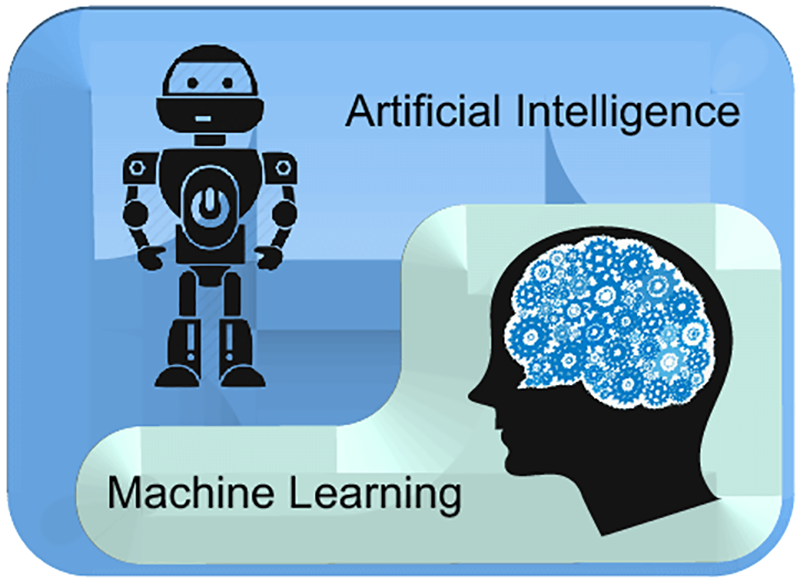Understanding AI Deep Learning: Revolutionizing Technology
Artificial Intelligence (AI) has been at the forefront of technological advancements, and within its realm, deep learning stands out as a transformative force. Deep learning is a subset of machine learning that mimics the workings of the human brain to process data and create patterns for decision-making.
What is Deep Learning?
Deep learning involves neural networks with three or more layers. These neural networks attempt to simulate the behavior of the human brain—allowing it to “learn” from large amounts of data. While a neural network with a single layer can still make approximate predictions, additional hidden layers can help optimize accuracy.
How Does Deep Learning Work?
The core component of deep learning is the artificial neural network (ANN), which consists of nodes or neurons that are interconnected in layers. Each connection transmits data and applies weights that adjust during training through processes such as backpropagation and gradient descent.
Data is fed into the input layer, processed through hidden layers where computations occur, and results are produced in the output layer. The system learns by adjusting weights based on errors in predictions compared to actual outcomes.
Applications of Deep Learning
- Image and Speech Recognition: Deep learning algorithms have significantly improved accuracy in recognizing images and understanding spoken language.
- Natural Language Processing: It powers applications like chatbots and virtual assistants by enabling them to understand and respond to human language more naturally.
- Autonomous Vehicles: Self-driving cars rely on deep learning to interpret sensor data, recognize obstacles, and make driving decisions.
- Healthcare: It’s used for diagnosing diseases from medical images, predicting patient outcomes, and personalizing treatment plans.
The Future of Deep Learning
The future holds immense potential for deep learning as it continues to evolve. With advancements in computational power and data availability, deep learning models will become even more sophisticated. Research is ongoing in areas like unsupervised learning, reinforcement learning, and improving model interpretability.
The integration of deep learning into various industries promises enhanced efficiency, innovation, and automation. However, challenges such as ethical considerations, data privacy concerns, and algorithmic biases need ongoing attention as technology progresses.
Conclusion
AI deep learning is reshaping how we interact with technology across numerous fields. As it continues to develop, it will unlock new possibilities that were once considered science fiction. Embracing these changes responsibly will be key to harnessing its full potential for societal benefit.
Understanding AI and Deep Learning: Answers to 9 Common Questions
- What are the 4 types of learning in AI?
- What is deep learning vs AI?
- What is an example of deep learning?
- What is deep learning AI?
- What are examples of deep learning AI?
- What AI has deep learning?
- What’s the difference between AI machine learning and deep learning?
- What are the 4 types of AI?
- What are the 4 types of AI learning?
What are the 4 types of learning in AI?
In the realm of AI, there are four primary types of learning: supervised learning, unsupervised learning, semi-supervised learning, and reinforcement learning. Supervised learning involves training a model on a labeled dataset, meaning that each training example is paired with an output label. This type of learning is typically used for tasks like classification and regression. Unsupervised learning, on the other hand, deals with unlabeled data and aims to identify patterns or structures within the input data; common applications include clustering and dimensionality reduction. Semi-supervised learning combines elements of both supervised and unsupervised approaches by using a small amount of labeled data alongside a larger set of unlabeled data to improve learning accuracy. Lastly, reinforcement learning focuses on training models to make sequences of decisions by rewarding desired behaviors and punishing undesired ones, which is particularly useful in robotics and game-playing scenarios where an agent learns to achieve goals through trial and error interactions with its environment.
What is deep learning vs AI?
Deep learning and artificial intelligence (AI) are closely related, yet distinct concepts within the realm of computer science. AI is a broad field that encompasses any technique enabling computers to mimic human intelligence, including reasoning, learning, problem-solving, and perception. Within AI, there are various subsets, one of which is machine learning—a method that allows systems to learn from data rather than being explicitly programmed. Deep learning is a further specialization of machine learning that uses neural networks with many layers (hence “deep”) to analyze complex patterns in large datasets. While AI includes a wide range of technologies and approaches aimed at creating intelligent systems, deep learning specifically refers to the use of multi-layered neural networks to perform tasks such as image recognition, natural language processing, and more.
What is an example of deep learning?
An example of deep learning is the application of convolutional neural networks (CNNs) in image recognition. CNNs are a type of deep learning model specifically designed to process visual data. By training a CNN on a large dataset of images with labeled categories, the network can learn to identify patterns and features within the images. This enables accurate classification of new, unseen images based on the patterns it has learned during training. The use of CNNs in image recognition has revolutionized fields such as computer vision, enabling technologies like facial recognition, object detection, and autonomous driving systems to perform with remarkable accuracy and efficiency.
What is deep learning AI?
Deep learning AI is a specialized subset of artificial intelligence that focuses on using neural networks with multiple layers to analyze various types of data. It mimics the human brain’s ability to learn from experience, allowing machines to recognize patterns, make decisions, and improve over time. These neural networks are composed of interconnected nodes or neurons that process input data, apply weights, and adjust through learning algorithms such as backpropagation. Deep learning is particularly effective in tasks involving large datasets and complex patterns, such as image and speech recognition, natural language processing, and autonomous systems. Its ability to automatically extract features from raw data without manual intervention sets it apart from traditional machine learning techniques.
What are examples of deep learning AI?
Deep learning AI has been applied in a variety of groundbreaking applications across different industries. One prominent example is in image recognition, where deep learning models like convolutional neural networks (CNNs) are used to identify and classify objects within images with remarkable accuracy. This technology is widely used in social media platforms for tagging photos and in security systems for facial recognition. Another example is natural language processing (NLP), where deep learning algorithms power virtual assistants like Siri and Alexa, enabling them to understand and respond to human speech. In the healthcare sector, deep learning aids in diagnosing diseases by analyzing medical images such as X-rays or MRIs, often detecting conditions more accurately than human practitioners. Additionally, deep learning plays a crucial role in autonomous vehicles, where it helps interpret sensor data to navigate roads safely. These examples illustrate the versatility and transformative impact of deep learning AI across various domains.
What AI has deep learning?
Many AI systems utilize deep learning, a powerful subset of machine learning characterized by neural networks with multiple layers. Prominent examples include image and speech recognition systems, such as those used by Google Photos and Apple’s Siri. Deep learning is also integral to autonomous vehicles, enabling them to process vast amounts of sensor data for navigation and decision-making. In the realm of natural language processing, technologies like OpenAI’s GPT models leverage deep learning to understand and generate human-like text. Additionally, healthcare applications use deep learning for tasks like diagnosing diseases from medical images and predicting patient outcomes. These examples illustrate how deep learning is embedded in various AI technologies, driving advancements across numerous fields.
What’s the difference between AI machine learning and deep learning?
Artificial Intelligence (AI), machine learning, and deep learning are interconnected fields, but each has distinct characteristics. AI is the broadest concept, encompassing any technique that enables machines to mimic human intelligence. Machine learning is a subset of AI that focuses on the development of algorithms allowing computers to learn from and make predictions based on data. Deep learning, in turn, is a specialized subset of machine learning that uses neural networks with multiple layers (hence “deep”) to analyze various factors of data. While machine learning typically requires structured data and manual feature extraction, deep learning automates this process by recognizing patterns in unstructured data such as images or audio. This hierarchy illustrates how deep learning is an advanced methodology within the broader scope of AI technologies.
What are the 4 types of AI?
Artificial Intelligence (AI) can be categorized into four primary types based on their capabilities and functionalities. The first type is Reactive Machines, which are the most basic form of AI that can only react to current scenarios without any memory or understanding of past experiences. An example would be IBM’s Deep Blue, the chess-playing computer. The second type is Limited Memory, which can retain past information temporarily and use it to inform future decisions; this is commonly seen in self-driving cars that use data from recent events to make immediate driving decisions. The third type is Theory of Mind, which is still largely theoretical and involves machines that can understand human emotions and social interactions, allowing for more complex decision-making processes. The fourth and most advanced type is Self-aware AI, which not only understands human emotions but also possesses a sense of self-awareness; however, this level of AI does not yet exist in reality and remains a topic of research and speculation in the field.
What are the 4 types of AI learning?
In the realm of AI deep learning, there are four primary types of learning that enable machines to process data and improve over time: supervised learning, unsupervised learning, semi-supervised learning, and reinforcement learning. Supervised learning involves training a model on a labeled dataset, where the input and desired output are provided, allowing the model to learn the mapping between them. Unsupervised learning deals with unlabeled data, where the system tries to identify patterns or structures within the input data without any explicit guidance. Semi-supervised learning is a hybrid approach that combines a small amount of labeled data with a large amount of unlabeled data during training, aiming to improve learning accuracy without the need for extensive labeling. Finally, reinforcement learning is inspired by behavioral psychology and involves training models through trial and error using feedback from their actions in an environment to maximize cumulative rewards. Each type of AI learning serves distinct purposes and is applied based on specific problem requirements.



